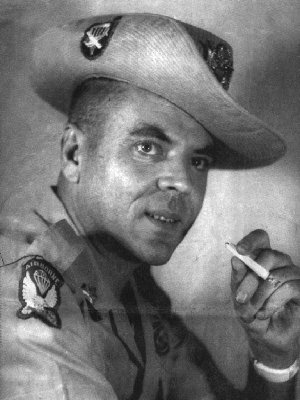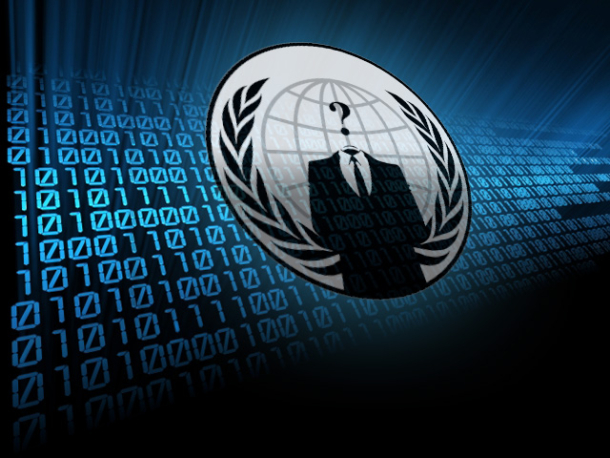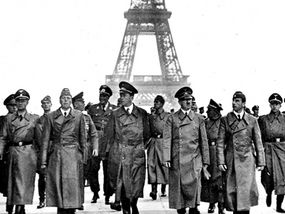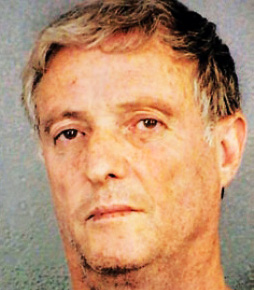Alex Constantine - November 21, 2013
Lucien Conein was born in Paris in 1919. Five years later his widowed mother arranged for him to live with her sister in Kansas City, who had married a soldier in the United States Army (he had served in France during the First World War).
When the Second World War broke out in 1939, Conein returned to France and joined the French Army. After the German invasion in 1940, Conein returned to the United States. He now joined the U.S. Army but because of his knowledge of France he was transferred to the Office of Strategic Services (OSS).
In 1944 he was sent to Vichy France with orders to help the French Resistance attack the German Army during the Allied landings in Normandy. He worked with the Jedburghs, a multinational band directed by the Office of Strategic Services (OSS) and the British Special Operations Executive (SOE).
While in France Conein working with the Corsican Brotherhood, an underworld organization allied with the resistance. Later Conein was to say: ""When the Sicilians put out a contract, it's usually limited to the continental United States, or maybe Canada or Mexico. But with the Corsicans, it's international. They'll go anywhere. There's an old Corsican proverb: 'If you want revenge and you act within 20 years, you're acting in haste.' " With the death of Adolf Hitler and the surrender of Germany in April, 1945, Conein was sent to Vietnam where he helped organize attacks against the Japanese Army.
At the end of the Second World War Conein returned to Europe as a member of the OSS. This included organizing the infiltration of spies and saboteurs into those countries in Eastern Europe under the control of the Soviet Union. Conein later joined the Central Intelligence Agency (CIA) and was involved in covert operations in several different countries.
 In 1951, Gordon Stewart, the CIA chief of espionage in West Germany, sent Conein to establish a base in Nuremberg. The following year Ted Shackley arrived to help Conein with his work. The main purpose of this base was to send agents into Warsaw Pact countries to gather information needed to fight the Soviet Union during the Cold War. The venture was not a great success and the governments in both Poland and Czechoslovakia announced that they had smashed several CIA espionage rings. Later he worked with William Harvey in Berlin.
In 1951, Gordon Stewart, the CIA chief of espionage in West Germany, sent Conein to establish a base in Nuremberg. The following year Ted Shackley arrived to help Conein with his work. The main purpose of this base was to send agents into Warsaw Pact countries to gather information needed to fight the Soviet Union during the Cold War. The venture was not a great success and the governments in both Poland and Czechoslovakia announced that they had smashed several CIA espionage rings. Later he worked with William Harvey in Berlin.
In 1954 Conein was sent to work under General Edward Lansdale in a covert operation against the government of Ho Chi Minh in North Vietnam. The plan was to mount a propaganda campaign to persuade the Vietnamese people in the south not to vote for the communists in the forthcoming elections. In the months that followed they distributed targeted documents that claimed the Vietminh had entered South Vietnam and were killing innocent civilians. The Ho Chi Minh government was also accused of slaying thousands of political opponents in North Vietnam.
In the late 1950s Conein worked closely with William Colby, the CIA station chief in Saigon. Conein helped to arm and train local tribesmen, mostly the Montagnards, who carried out attacks on the Vietminh. These men also guided Vietnamese Special Forces units who made commando raids into Laos and North Vietnam.
President John F. Kennedy eventually became convinced that President Ngo Dinh Diem would never be able to unite the South Vietnamese against communism. Several attempts had already been made to overthrow Diem but Kennedy had always instructed the CIA and the US military forces in Vietnam to protect him. In order to obtain a more popular leader of South Vietnam, Kennedy agreed that the role of the CIA should change. Conein provided a group of South Vietnamese generals with $40,000 to carry out the coup with the promise that US forces would make no attempt to protect Diem. At the beginning of November, 1963, Diem was overthrown by a military coup. After the generals had promised Diem that he would be allowed to leave the country they changed their mind and killed him. Nguyen Van Thieu now became the chairman of a 10-member military directorate.
It has been suggested that Conein might have been involved in the assassination of John F. Kennedy. In his book, The Last Investigation (1993), Gaeton Fonzi points out that Conein was closely connected to E. Howard Hunt and Mitchell WerBell, two men suspected of the crime. Joseph Trento has also pointed out that Conein worked with Ted Shackley and William Harvey at the JM/WAVE CIA station in Miami in 1963.
Leroy Fletcher Prouty claimed that Conein has been identified as being in Dallas on the day of the assassination. Whereas Ron Ecker and Jack White have suggested that he was standing at the corner of Main and Houston at the time Kennedy was killed. However, Larry Hancock has investigated Conein and believes he never left Vietnam during 1963.
Conein left the CIA in 1968 and became a businessman in South Vietnam. In 1970 E. Howard Hunt introduced Conein to President Richard Nixon. Two years later Nixon appointed Conein to the Drug Enforcement Administration, where he directed an intelligence-gathering and operations unit. It has been claimed by William Turner and Warren Hinckle in their book, Deadly Secrets, that this work included "plots to assassinate key international drug figures".
In 1972 E. Howard Hunt considered hiring Conein for the group that bungled the 1972 Watergate burglary at the Democratic National Committee headquarters. Conein later told the historian, Stanley Karnow: "If I'd been involved, we'd have done it right."
Lucien Conein died after a heart attack at Suburban Hospital, Virginia, on 3rd June, 1998.








